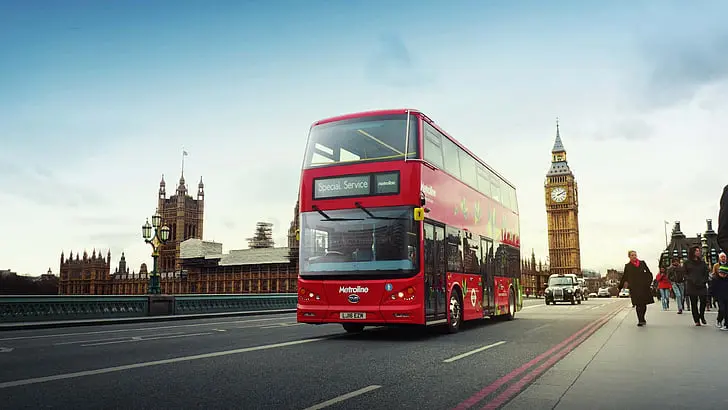
Dive into the world of green transportation ideas! Explore eco-friendly ways to travel that are good for the planet and your pocket.
Green Transportation Ideas Key Takeaways:
- Green transportation ideas include:
- Using electric vehicles, bicycles, public transit, and carpooling.
- These eco-friendly options reduce carbon emissions, improve air quality, and offer efficient alternatives to traditional gasoline-powered transport.
- Embracing these methods supports environmental sustainability and promotes healthier communities.
Looking for green transportation ideas? You’re in the right place! From electric bikes to carpooling, discover how easy and fun it can be to reduce your carbon footprint.
Join us as we explore innovative and sustainable ways to get around, making every journey a step towards a cleaner, greener future.
Green Transportation Ideas
The move towards sustainable transportation ideas is a key part of our global effort to protect the environment.
This change is about more than just how we get around; it’s about making our communities and the planet healthier.
New and innovative transportation methods are leading the way in reducing pollution and making our lives better.
These methods offer a variety of options that are good for the Earth and improve urban living, showing us a path to a cleaner future.
Sustainable Transportation Options
- Electric and Hybrid Vehicles
- The Rise of Electric Mobility: Electric and hybrid vehicles are at the forefront of reducing air pollution and fighting climate change.
- Electric cars offer a zero-emission alternative to traditional vehicles, while hybrids combine electric motors with gasoline engines for improved fuel efficiency.
- Electric bikes and scooters provide additional green commuting options, ideal for navigating crowded city streets.
- Public Transportation Innovations
- Revolutionizing Urban Commutes: Cities are transforming public transit with electric buses and green trains, making journeys cleaner and more sustainable.
- Places like New York City and San Francisco are leading by example, adopting eco-friendly public transportation systems that serve as models for urban areas worldwide.
- Biking and Walking
- Promoting Active Travel: The development of bike lanes and pedestrian paths encourages people to choose walking or biking over driving.
- These options not only reduce traffic congestion but also promote better health and lower carbon emissions, contributing to cleaner air and a healthier community.
- Carpooling and Ride-Sharing
- Reducing Emissions Together: Carpooling and ride-sharing are effective ways to cut down on carbon emissions and build community connections.
- By sharing rides, individuals can significantly lower the number of vehicles on the road, leading to less traffic and pollution.
Comparative Analysis of Sustainable Transportation
- A Closer Look at Efficiency and Emissions
- This section will include a table comparing the carbon footprint and energy efficiency of various sustainable transportation methods, providing a clear visual representation of the benefits and impacts of each option.
This table serves as a visual guide to understanding the environmental benefits of each option, making it easier to compare them at a glance.
| Transportation Method | Carbon Footprint Reduction | Energy Efficiency |
|---|---|---|
| Electric Cars | High | Very High |
| Hybrid Vehicles | Moderate to High | High |
| Electric Bikes | Very High | Extremely High |
| Electric Buses | High | High |
| Biking and Walking | Zero Emissions | Not Applicable |
| Carpooling/Ride-Sharing | Variable, but generally High | Depends on vehicle and number of passengers |
- Carbon Footprint Reduction: Indicates the potential impact of sustainable transportation of each method to lower carbon emissions compared to traditional gasoline-powered vehicles.
- Energy Efficiency: Reflects how effectively each transportation method uses energy, contributing to its overall sustainability.
This table simplifies the comparison between different sustainable transportation options, showcasing their respective benefits in reducing environmental impact and improving energy usage.
Electric and hybrid vehicles show significant advantages in terms of carbon footprint reduction and energy efficiency, while biking and walking are the most eco-friendly choices with zero emissions.
Carpooling and ride-sharing efficiency vary, but these methods generally offer a high reduction in carbon footprint by optimizing vehicle use and reducing the number of cars on the road.
What is Sustainable Public Transportation?

Sustainable public transportation plays a crucial role in transforming urban environments into cleaner, more livable spaces. But what is it exactly?
It’s about offering efficient and accessible ways for people to get around that don’t harm the planet.
In major cities across the globe, sustainable public transportation is key to reducing the environmental impact of daily commutes.
By focusing on systems that minimize pollution and energy consumption, cities can significantly lower their carbon footprint and contribute to a healthier environment.
Sustainable transport refers to ways of transportation that are sustainable in terms of their social and environmental impacts. Components for evaluating sustainability include the particular vehicles used for road, water or air transport; the source of energy; and the infrastructure used to accommodate the transport (roads, railways, airways, waterways, canals and terminals). Wikipedia
Characteristics of Sustainable Public Transportation
- Energy Efficiency: Sustainable public transportation systems are designed to use energy more efficiently than personal vehicles. This means less fuel consumption for the same number of passengers, leading to lower greenhouse gas emissions.
- Low Emissions: These systems prioritize low-emission technologies. Electric buses and trains powered by renewable energy emit far fewer pollutants than their fossil fuel-powered counterparts.
- Accessibility: Ensuring that public transportation is accessible to everyone, regardless of their physical ability or economic status, is a hallmark of sustainability. This inclusivity encourages more people to use public transit, reducing the number of individual cars on the road.
Examples of Sustainable Public Transportation
- Eco-Friendly Buses: Many cities are introducing buses that run on electric power or alternative fuels, significantly cutting down on emissions.
- Green Trains: Rail systems powered by electricity, especially when sourced from renewable energy, offer a cleaner alternative to diesel-powered trains.
- Renewable Energy in Transit: Some transit systems are integrating solar panels and wind turbines to power facilities and operations, further reducing their reliance on non-renewable energy sources.
Benefits of Sustainable Public Transportation
- Improved Air Quality: By reducing emissions from buses, trains, and other forms of public transit, cities can achieve better air quality, leading to healthier residents.
- Reduced Fossil Fuel Dependence: Shifting to public transportation systems that use renewable energy or electric power decreases a city’s dependence on oil and gas, making them more energy-independent and resilient.
- Enhanced Urban Planning: Sustainable public transportation supports smarter urban planning.
- With efficient transit options, cities can design more walkable, bike-friendly communities that reduce the need for cars, alleviating traffic congestion and enhancing the quality of life.
Sustainable public transportation is not just about the vehicles used; it’s about creating a system that supports the environmental, economic, and social well-being of the community.
By investing in sustainable public transit, cities take a significant step toward a more sustainable future, proving that efficient, low-impact transportation is not only possible but essential.
Why is Sustainable Transportation Important
Sustainable transportation is vital in our fight against climate change and plays a pivotal role in creating healthier communities worldwide.
As one of the largest contributors to greenhouse gas emissions, the transportation sector has a significant impact on our planet’s climate and air quality.
Transitioning to sustainable transportation methods can drastically reduce these emissions, promoting a cleaner environment and supporting global efforts to mitigate climate change.
Beyond the environmental benefits, sustainable transportation offers economic and social advantages, making it a key component of a sustainable future.
No scenario for containing global warming is possible without urgent and distinct action in the transport sector. This is a sector that is often overlooked in the climate equation, but it shouldn’t be. Currently responsible for 20% of global greenhouse gas (GHG) emissions and rapidly increasing, transport is something that impacts everyone, everywhere. WeForum
Environmental Impact
- Reducing Global Warming: The direct link between transportation and global warming is undeniable. Traditional modes of transport, reliant on fossil fuels, emit large amounts of carbon dioxide and other greenhouse gases, contributing significantly to climate change.
- By adopting sustainable transportation methods, such as electric vehicles and public transit powered by renewable energy, we can significantly lower these emissions, slowing the pace of global warming.
- Improving Air Quality: Sustainable transportation also plays a crucial role in improving air quality. Reducing the number of gas-powered vehicles on the road decreases the amount of harmful pollutants, such as nitrogen oxides and particulate matter, that contribute to smog and respiratory problems.
Economic Benefits
- Fuel Efficiency and Cost Savings: Sustainable transportation methods are often more fuel-efficient than their traditional counterparts. This efficiency translates into direct cost savings for both individuals and communities by lowering fuel consumption and reducing the overall demand for oil.
- In the long run, investing in sustainable transportation infrastructure can also save cities and countries money on health care costs associated with air pollution-related illnesses.
- Encouraging Technological Innovation: The shift towards sustainable transportation drives technological innovation, leading to the development of new industries and job opportunities.
- The growth of the electric vehicle market, for example, has spurred advancements in battery technology and electric motor efficiency, further promoting economic growth.
Social Advantages
- Enhancing Public Health: By improving air quality and encouraging physical activity through options like biking and walking, sustainable transportation has a positive impact on public health.
- Less pollution means lower rates of respiratory diseases, heart conditions, and other health issues related to poor air quality.
- Reducing Traffic Congestion: Sustainable transportation can also alleviate traffic congestion, a major issue in many urban areas.
- Public transit systems, carpooling, and cycling reduce the number of vehicles on the road, leading to smoother traffic flow and less stress for commuters.
Sustainable transportation is not just an environmental imperative; it’s a comprehensive strategy that offers wide-ranging benefits.
By reducing our dependence on fossil fuels, improving air quality, driving economic growth, and enhancing public health and mobility, sustainable transportation supports a more resilient and sustainable world.
As we move forward, the importance of adopting and promoting sustainable transportation methods will only continue to grow, underscoring the need for collective action and innovation.
What Makes Transportation Sustainable?
Transportation sustainability hinges on several critical factors that work together to minimize environmental impact, enhance efficiency, and support the well-being of communities.
At the core of sustainable transportation are innovative energy sources, advanced technology, and thoughtfully designed infrastructure.
These elements ensure that transportation systems not only meet our current needs but do so in a way that preserves the planet for future generations.
By focusing on energy efficiency, embracing alternative fuels, and leveraging technological advancements, we can transform our transportation networks into models of sustainability.
Energy Efficiency and Alternative Fuels
- The Shift to Electric Power: Electric vehicles (EVs) are central to the transition towards sustainable transportation. By utilizing electric power, EVs offer a cleaner alternative to traditional vehicles, significantly reducing greenhouse gas emissions and air pollutants.
- Innovative Solutions: Fuel cells are another groundbreaking technology contributing to sustainable transportation. Fuel cell vehicles (FCVs) generate electricity through a chemical reaction between hydrogen and oxygen, producing only water as a byproduct. This technology exemplifies the move towards zero-emission transportation options.
- Alternative Fuels: Beyond electricity, sustainable transportation also explores the use of alternative fuels like biodiesel, ethanol, and natural gas. These fuels can offer lower carbon emissions compared to conventional gasoline and diesel, further reducing the transportation sector’s environmental impact.
Sustainable Infrastructure
- Bike Lanes and Pedestrian Paths: Incorporating bike lanes and pedestrian paths into urban planning is vital for promoting non-motorized, eco-friendly modes of transportation.
- These infrastructure elements encourage walking and biking, reducing the reliance on motor vehicles and fostering healthier, more active communities.
- Public Transportation Systems: Efficient and accessible public transportation systems are pillars of sustainable urban planning.
- By providing a reliable alternative to personal vehicle use, cities can significantly lower their overall transportation emissions, decrease traffic congestion, and improve air quality.
Technological Advancements
- Electric Motor Innovations: Advances in electric motor technology enhance the efficiency and performance of EVs, making them a more attractive option for consumers.
- Improvements in battery technology, such as increased energy density and faster charging times, also play a crucial role.
- Hybrid Technology: Hybrid vehicles combine the benefits of internal combustion engines with electric motors, offering improved fuel efficiency and reduced emissions.
- The ongoing development of hybrid technology represents a practical step towards more sustainable transportation, providing a bridge between conventional vehicles and fully electric solutions.
Sustainable transportation is shaped by a blend of energy efficiency, innovative fuel solutions, and smart infrastructure design, all supported by technological progress.
These factors not only contribute to reducing the environmental footprint of our travel habits but also pave the way for a future where transportation is cleaner, more efficient, and accessible to all.
As we continue to advance in these areas, the vision of a fully sustainable transportation system becomes increasingly attainable.
Examples of Sustainable Transportation
The landscape of sustainable transportation is rich and varied, showcasing a wide array of innovative solutions that cater to different needs and preferences.
From the streets of bustling cities to the pathways of quiet neighborhoods, examples of sustainable transportation demonstrate how technology, commitment, and creativity can come together to create environmentally friendly ways to move.
These examples not only offer a glimpse into a future of reduced carbon emissions and cleaner air but also highlight the practicality and accessibility of eco-friendly transportation options in our daily lives.
Electric Vehicles
- Electric Cars: Electric cars are becoming increasingly popular, with models like the Tesla Model 3, Nissan Leaf, and Chevrolet Bolt leading the charge towards mainstream adoption. These vehicles run entirely on electric power, eliminating tailpipe emissions and significantly reducing the carbon footprint of personal transportation.
- Electric Bikes and Scooters: For shorter distances and urban commutes, electric bikes and scooters offer an efficient and convenient alternative. Companies like Lime and Bird have popularized electric scooters, providing a flexible option for city dwellers looking to navigate congested streets without contributing to air pollution.
Public Transit

- Electric Buses: Cities around the world are integrating electric buses into their public transportation fleets. London, for example, has been adding electric double-decker buses to its routes, reducing emissions and setting a standard for public transit sustainability.
- Green Trains: Rail transport is also going green, with countries like Germany testing hydrogen-powered trains and others investing in fully electric rail systems. These trains offer a cleaner alternative to diesel-powered locomotives, significantly cutting down on greenhouse gas emissions.
Non-motorized Options
- Biking and Walking: The simplest and most sustainable transportation methods are biking and walking.
- Cities that invest in bike lanes and pedestrian-friendly infrastructure make it easier for residents to choose these zero-emission modes of transport.
- Places like Amsterdam and Copenhagen are renowned for their cycling culture, serving as models for other cities aiming to reduce reliance on motorized vehicles.
Though considered one of the best-known centers of bicycle culture worldwide, numerous other cities in the Netherlands and globally outrank Amsterdam in bike-friendliness, including The Hague, Eindhoven and Almere, which were nominated for the Fietsstad 2014 awards. The city of Groningen won the award in 2001. Wikipedia
https://en.wikipedia.org/wiki/Cycling_in_Amsterdam
Comparative Analysis of Sustainable Transportation Options
| Transportation Method | Environmental Benefits | Usage Contexts |
|---|---|---|
| Electric Cars | Zero tailpipe emissions, reduced greenhouse gases | Urban and suburban commutes, long distances |
| Electric Bikes and Scooters | Low energy consumption, highly efficient for short distances | Urban commuting, last-mile travel |
| Electric Buses | Significant reduction in urban air pollution | City-wide public transportation |
| Green Trains | Lower emissions compared to cars and airplanes | Inter-city and regional travel |
| Biking and Walking | Zero emissions promotes health and well-being | Short distances, urban areas |
These examples illustrate the breadth and depth of sustainable transportation options available today.
By embracing these alternatives, individuals and communities can significantly reduce their environmental impact while enjoying the benefits of efficient, convenient, and accessible transportation.
How Can We Make Transportation Sustainable
Creating a sustainable transportation system is a shared responsibility that requires action from individuals, communities, and governments alike.
By adopting a multifaceted approach that includes technological innovation, policy reform, and behavioral change, we can significantly reduce the environmental impact of our transportation habits.
This transition not only supports the fight against climate change but also leads to healthier, more livable urban environments.
The following strategies outline practical steps that can be taken to promote sustainable transportation and make it a viable option for everyone.
Adopting Electric and Hybrid Vehicles
- Incentives for Electric Vehicle (EV) Purchase: Governments can offer tax incentives, rebates, and subsidies to make EVs and hybrid vehicles more affordable for the average consumer. This financial support can significantly increase the adoption rate of cleaner vehicles.
- Expanding Charging Infrastructure: To support the growing number of EVs, communities, and governments must invest in expanding the charging infrastructure. This includes installing charging stations in public spaces, residential areas, and workplaces.
- Raising Awareness: Education campaigns can help raise awareness about the benefits of electric and hybrid vehicles, dispelling myths and highlighting their environmental and economic advantages.
Improving Public Transit
- Investing in Eco-Friendly Buses and Trains: Public funds should be allocated to upgrade existing public transit fleets to electric or hybrid models. This shift can drastically reduce the carbon footprint of public transportation.
- Increasing Accessibility and Reliability: Making public transit more accessible and reliable encourages its use. This can be achieved by expanding service hours, increasing the frequency of service, and enhancing the comfort and safety of public transit options.
Enhancing Infrastructure
- Developing Bike Lanes and Pedestrian Paths: Cities and towns should prioritize the development of safe and convenient bike lanes and pedestrian paths. This infrastructure supports active transportation modes like biking and walking, which are sustainable and promote physical health.
- Smart Urban Planning: Integrating transportation planning with urban development can create more walkable communities, reducing the need for long commutes and encouraging the use of public transit and non-motorized transportation options.
Promoting Carpooling and Ride-Sharing
- Leveraging Technology: Ride-sharing and carpooling apps can make it easier for people to find others with similar commutes, reducing the number of vehicles on the road and cutting down on emissions.
- Supporting Carpool Programs: Employers, schools, and local governments can support carpool programs by offering incentives such as preferred parking for carpool vehicles or financial benefits for participants.
- Community Initiatives: Community-led initiatives and programs can promote carpooling and ride-sharing as practical and sustainable transportation options, fostering a culture of shared mobility.
By implementing these strategies, we can make significant strides toward a more sustainable transportation system.
Each action, from choosing an electric vehicle to opting for public transit, contributes to a larger effort to reduce our environmental footprint and create a cleaner, greener future.
Most Sustainable Mode of Transportation
When evaluating the sustainability of different transportation modes, it’s crucial to consider their environmental impact, energy efficiency, and practicality for everyday use.
Sustainability in transportation is not just about reducing emissions; it also involves using resources efficiently and ensuring that transportation methods can be scaled to meet the needs of a growing population without degrading the environment.
This analysis delves into various transportation options to determine the most sustainable, providing insights into how each mode contributes to a greener future.
Comparison: Electric Vehicles vs. Public Transit vs. Biking and Walking
- Electric Vehicles (EVs): EVs are praised for their zero tailpipe emissions and reduced greenhouse gas output when charged with renewable energy. However, the sustainability of EVs also depends on the source of the electricity used to charge them and the environmental impact of battery production.
- Public Transit: Buses and trains, especially those powered by electric or hybrid systems, offer a more energy-efficient way to move large numbers of people, reducing the per capita emissions compared to individual car use. The scalability of public transit can significantly lower a city’s overall transportation emissions.
- Biking and Walking: These modes of transportation are the most sustainable, with zero emissions and minimal environmental impact. Biking and walking are highly energy-efficient and contribute to improved public health, though their practicality can be limited by distance and urban infrastructure.
Factors to Consider
- Carbon Emissions: Assessing the carbon footprint of each transportation mode is key. While biking and walking have a negligible footprint, the sustainability of motorized options like EVs and public transit depends on factors like energy source and vehicle efficiency.
- Energy Consumption: Energy efficiency varies significantly across transportation modes, with non-motorized options being the most efficient and traditional gasoline vehicles being the least.
- Scalability: The ability to serve an increasing number of users without proportional increases in environmental impact is crucial. Public transit and biking infrastructure, for example, can be scaled effectively with relatively low environmental costs.
Table: Ranking of Transportation Modes Based on Sustainability Criteria
| Transportation Mode | Environmental Impact | Energy Efficiency | Scalability | Overall Sustainability |
|---|---|---|---|---|
| Biking/Walking | Lowest | Highest | High | Most Sustainable |
| Public Transit | Low to Moderate | High | Very High | Highly Sustainable |
| Electric Vehicles | Moderate (depends on energy source) | Moderate to High | Moderate | Sustainable |
| Hybrid Vehicles | Moderate | Moderate | Low | Moderately Sustainable |
| Gasoline Vehicles | Highest | Lowest | Low | Least Sustainable |
This analysis underscores that while electric vehicles and public transit significantly reduce the environmental impact compared to traditional gasoline-powered vehicles, biking and walking remain the most sustainable transportation modes.
However, the practicality and effectiveness of each option vary based on individual circumstances and urban planning decisions.
A comprehensive approach to sustainable transportation will likely include a mix of these modes, tailored to the specific needs and capabilities of each community.
Most Eco-Friendly Transportation
In the quest for sustainability, choosing the most eco-friendly transportation options is essential to minimizing our environmental footprint.
The ideal modes of transport are those that effectively balance practicality with minimal environmental impact, contributing to cleaner air, reduced greenhouse gas emissions, and a healthier planet.
This segment explores the transportation methods that stand out for their eco-friendly credentials, showcasing how innovation, community action, and thoughtful planning can make a significant difference in how we move around.
Leading Options
- Electric Vehicles (EVs): EVs are celebrated for their low operational emissions, especially when powered by renewable energy sources. As battery technology advances and charging infrastructure expands, EVs represent a promising path toward reducing the transportation sector’s carbon footprint.
- Bicycles: Bicycling is perhaps the most environmentally friendly way to travel, producing zero emissions and requiring minimal resources for manufacturing and maintenance compared to motor vehicles. The proliferation of bike-sharing programs in cities worldwide highlights the growing recognition of cycling’s environmental benefits.
- Public Transit Systems: Efficient public transit systems, particularly those utilizing electric or hybrid technologies, significantly lower emissions per passenger than individual car use. By moving more people with fewer resources, public transit is a cornerstone of eco-friendly urban mobility.
Innovative Solutions
- Green Technology in Transportation: The integration of green technologies, such as hydrogen fuel cells in buses or solar panels on train stations, pushes the envelope of what’s possible in eco-friendly transportation.
- These innovations not only reduce emissions but also harness renewable energy sources, paving the way for a cleaner transportation future.
- Renewable Energy Sources: Transitioning the power supply for electric transportation options to renewable energy sources like wind, solar, and hydroelectric power is key to maximizing their environmental benefits.
- This shift ensures that the operation of EVs and electrified public transit contributes to a significant reduction in overall greenhouse gas emissions.
Community Initiatives
- Role of Urban Planning: Thoughtful urban planning that prioritizes sustainable transportation can transform how communities move.
- By designing cities with extensive bike lanes, pedestrian zones, and accessible public transit, urban planners can reduce reliance on personal vehicles and encourage eco-friendly travel habits.
- Community Efforts: Grassroots movements and community-led initiatives play a pivotal role in promoting eco-friendly transportation.
- From advocating for more green spaces and bike paths to organizing car-free days, these efforts raise awareness and foster a culture of sustainability within communities.
Eco-friendly transportation is about making choices that benefit our environment, health, and communities.
By embracing electric vehicles, bicycles, and public transit, supported by innovative solutions and community initiatives, we can make strides toward a more sustainable and eco-conscious way of life.
These efforts not only contribute to reducing our environmental impact but also inspire a global movement towards greener, more sustainable transportation practices.
Electric Scooters: A Flexible and Eco-Friendly Commuting Option

Electric scooters have surged in popularity as a flexible and eco-friendly commuting option, especially in urban environments.
Their rise is a testament to the growing demand for sustainable transportation methods that are not only efficient but also accessible and fun.
Electric scooters offer a unique blend of convenience and sustainability, filling the gap between short walks and longer public transit rides.
This section explores the environmental benefits of electric scooters and their role in the broader context of eco-friendly transportation.
Advantages of Electric Scooters
- Reduced Carbon Footprint: Electric scooters emit zero tailpipe emissions, making them a clean alternative to gasoline-powered vehicles for short trips. By leveraging electric power, typically from a rechargeable battery, scooters contribute to lowering urban air pollution and greenhouse gas emissions.
- Energy Efficiency: Electric scooters are highly energy-efficient, requiring less power to operate over a given distance compared to cars, motorcycles, and even electric bikes. This efficiency translates into lower energy consumption and a smaller environmental impact per trip.
- Ease of Use and Accessibility: The widespread availability of electric scooter-sharing programs has made them an easily accessible option for many urban dwellers. Their design and operation simplicity encourage more people to choose this eco-friendly mode over driving, particularly for last-mile transportation needs.
Integration into Urban Mobility

- Complementing Public Transit: Electric scooters serve as an excellent complement to public transit, offering a solution for the last-mile problem that many commuters face. They provide a quick and convenient way to travel from transit stops to final destinations, bridging gaps in the urban transportation network.
- Reducing Traffic Congestion: By offering an alternative to car trips for short distances, electric scooters can help reduce traffic congestion in crowded city centers. Less congestion means smoother flows of traffic and lower emissions from idling vehicles.
- Urban Planning and Infrastructure: The rise of electric scooters has prompted cities to reconsider urban planning and infrastructure development. Initiatives like dedicated scooter lanes and parking areas not only make scooter use safer and more organized but also signal a shift towards multi-modal, sustainable urban mobility.
Electric scooters epitomize the innovative spirit of green transportation, offering a solution that is both eco-friendly and suited to the fast pace of modern urban life.
As cities continue to adapt and embrace sustainable transportation options, electric scooters stand out as a symbol of progress toward a cleaner, more efficient, and more enjoyable way to travel.
How Effective is Sustainable Transportation
Sustainable transportation is pivotal in the global effort to tackle environmental challenges, offering a pathway to reduce our carbon footprint and enhance public health.
By shifting away from fossil fuel-dependent vehicles to more eco-friendly options, we can significantly mitigate the adverse effects of transportation on the environment.
This section evaluates the effectiveness of sustainable transportation initiatives, examining their impact on reducing greenhouse gas emissions and air pollution, the challenges faced in broadening their adoption, and highlighting success stories from cities that have led the way in sustainable mobility.
Impact Analysis: Reduction in Greenhouse Gases and Air Pollution
- Significant Emissions Reduction: Sustainable transportation methods, such as electric vehicles, public transit, and non-motorized options like biking and walking, have been proven to significantly reduce greenhouse gas emissions.
- By decreasing reliance on fossil fuels, these alternatives contribute to a notable decrease in carbon dioxide and other harmful emissions.
- Improvement in Air Quality: The adoption of eco-friendly transportation directly correlates with improved air quality.
- Cities that invest in sustainable transportation infrastructure see a reduction in pollutants like nitrogen oxides and particulate matter, leading to clearer skies and healthier urban environments.
Challenges and Limitations
- Infrastructure Requirements: One of the main barriers to the widespread adoption of sustainable transportation is the lack of necessary green transportation infrastructure, such as charging stations for electric vehicles and safe cycling lanes for bikes.
- Economic and Social Factors: Economic incentives, accessibility issues, and cultural attitudes towards transportation can also hinder the adoption of sustainable modes. Overcoming these challenges requires comprehensive policy planning and community engagement.
- Technological Advancements: While technology has advanced rapidly, further innovation is needed to increase the efficiency, affordability, and appeal of sustainable transportation options to a broader audience.
Success Stories
- San Francisco: San Francisco has made significant strides in sustainable transportation through investments in public transit, cycling infrastructure, and pedestrian-friendly initiatives. The city’s commitment to reducing car dependency is evident in its expanding network of bike lanes and the electrification of its public transit system.
- New York City: New York City stands as a model for integrating sustainable transportation into the fabric of urban life. The city’s extensive public transit system, bike-sharing program, and pedestrian plazas have contributed to a decrease in car usage and an increase in environmentally friendly travel options.
These examples demonstrate that, despite challenges, the implementation of sustainable transportation strategies can lead to substantial environmental and public health benefits.
The success stories of cities like San Francisco and New York City provide valuable lessons and inspiration for other urban areas aiming to achieve similar sustainability goals.
By addressing the barriers to adoption and continuing to innovate, we can enhance the effectiveness of sustainable transportation and move closer to achieving our global environmental objectives.
FAQs: Understanding Green Transportation
Green transportation, often referred to as sustainable transportation, involves methods and solutions designed to reduce environmental impact and promote a cleaner, healthier future.
This section aims to address common questions surrounding green transportation, offering clear and informative answers to enhance understanding and encourage the adoption of more eco-friendly travel options.
Q: What are green methods of transportation?
A: Green methods of transportation include any form of travel that minimizes environmental impact.
This includes biking, walking, using electric vehicles (EVs), public transit systems powered by clean energy, and carpooling.
These methods help reduce carbon emissions, improve air quality, and decrease reliance on fossil fuels.
Q: What are green solutions for transportation?
A: Green transportation solutions refer to practices, technologies, and policies designed to make transportation more sustainable.
These include developing electric and hybrid vehicles, expanding public transit networks, creating bike lanes and pedestrian paths, implementing car-sharing programs, and using renewable energy sources to power transportation systems.
Q: What are sustainable transportation ideas?
A: Sustainable transportation ideas focus on innovative ways to move people and goods that are environmentally friendly and resource-efficient.
Examples include solar-powered vehicles, smart urban planning that promotes walkability and cycling, and the use of technology to optimize public transit routes and reduce congestion.
Q: What is the best green transport?
A: The best green transport varies depending on specific needs and contexts, but generally, non-motorized options like walking and biking are considered the most eco-friendly.
For longer distances, e-scooters, electric vehicles, and public transit systems, especially those powered by renewable energy, are highly effective green transportation options.
Q: What is the least polluting mode of transportation?
A: Biking and walking are the least polluting modes of transportation, as they generate no emissions and have a minimal environmental footprint.
Among motorized options, electric vehicles and public transit powered by clean energy sources are the least polluting.
Q: What is the most carbon-friendly transportation?
A: The most carbon-friendly transportation methods are those that produce the least amount of carbon dioxide emissions.
Electric vehicles charged with renewable energy, along with walking and biking, are among the most carbon-friendly options.
Q: What form of transport is worst for the environment?
A: Traditional gasoline and diesel-powered vehicles are among the worst for the environment due to their high carbon emissions and significant contribution to air pollution. Air travel is also highly polluting, especially for short distances.
Q: What is the most ecological way to travel?
A: The most ecological way to travel is by using modes that have minimal environmental impact, such as biking, walking, and using electric vehicles or public transit systems powered by renewable energy.
Q: What is the most sustainable freight transport?
A: The most sustainable freight transport methods include rail shipping, as they are more energy-efficient and produce fewer emissions per ton-mile compared to road and air freight.
Electric and hybrid trucks are also emerging as sustainable options for short to medium distances.
Q: What is the least sustainable transport?
A: The least sustainable forms of transport are those that rely heavily on fossil fuels and have high per capita emissions, such as personal gasoline vehicles and air travel, especially for short-haul flights.
Q: What is the most energy-efficient transportation?
A: Public transit systems, particularly trains and buses, are among the most energy-efficient forms of transportation when measured by energy use per passenger mile.
Walking and biking are also extremely energy-efficient as they rely on human power.
Q: What are the 4 main types of freight transportation?
A: The four main types of freight transportation are road (trucking), rail, air, and sea (shipping).
Each has its own set of advantages and environmental impacts, with rail and sea generally being more energy-efficient and less polluting than road and air freight.
These FAQs provide a foundational understanding of green transportation, highlighting the importance of sustainable travel options for the environment and public health.
Conclusion: Moving Towards a Greener Future
The Way Forward
Adopting sustainable transportation is crucial for our planet’s health. Every choice, from biking to work to using public transit, makes a difference.
These actions reduce our carbon footprint and support a healthier environment.
Make Sustainable Choices
Integrating eco-friendly travel into daily life is easier than many think.
Options like electric vehicles and walking not only benefit us but also the world around us.
It’s about making conscious choices for a sustainable lifestyle.
Global Impact
Our transportation choices have a worldwide effect. By choosing greener options, we contribute to global efforts against climate change.
Cities like San Francisco and New York City show us the positive outcomes of such choices.
Collective Benefits
Together, we can create significant change. Sustainable transportation leads to cleaner air and reduced greenhouse gas emissions.
Let’s commit to eco-friendly transportation for a brighter, greener future.
Resources
For those interested in the latest trends and insights into electric vehicles (EVs), the following articles provide comprehensive overviews and analyses:
- Global EV Outlook 2023 by the International Energy Agency (IEA): This report provides an in-depth analysis of the electric vehicle market’s exponential growth. In 2022, electric car sales surpassed 10 million, making up 14% of all new car sales, with significant increases expected through 2023. The IEA anticipates electric cars to account for 18% of total car sales by the end of 2023, driven by national policies, incentives, and potentially high oil prices. This growth reflects broader trends in major markets like China, Europe, and the United States, where policy support and investment in EV infrastructure are pivotal. For more detailed insights, visit the IEA’s report summary here.
- How electric vehicles will shape the future by McKinsey & Company: This article discusses the rapidly evolving landscape of electric vehicles, highlighting the significant economic opportunities and technological advancements. By 2035, it’s expected that the largest automotive market will be fully electric, offering a glimpse into a sustainable future. The piece also explores the future of flying taxis, the profitability of electric vehicles, and the development of EV infrastructure. Find out more about how electric vehicles are shaping the future here.
- Trends in electric vehicles: what can we expect in 2023? by EV Magazine: This article provides an opinion piece on the anticipated trends in the electric vehicle sector for 2023, noting advancements despite supply chain disruptions. It covers improvements in EV battery technology, the competitive edge given by high fuel prices, and the increase in charging infrastructure. Additionally, it touches on the role of artificial intelligence in vehicle health checks and the integration of smart grid technologies. For a deeper dive into these trends, check out the full article here.
These resources offer valuable perspectives on the current state and future prospects of electric vehicles, highlighting the industry’s growth, the technological innovations driving this trend, and the global push towards more sustainable transportation solutions.







